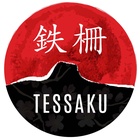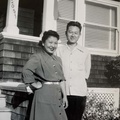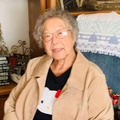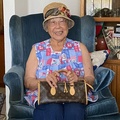“I like to have my grandchildren know about it, where they’re from and what happened to their grandparents. And how hard they had to work so that they have equal rights with everybody else.”
On April 1, 2020, Yosh Uchida became a centenarian, carrying with him a legacy and reputation that reflects his long life. Born to a farming family in what is now Disneyland, Yosh remembers the difficult years of growing up during the Depression, and the concern of the community’s Issei parents that Japanese language and culture were being forgotten by their American-born children. “They thought we should talk in Japanese. Well, we went to Japanese school but we always talked in English. And they thought we were losing all the Japanese culture. So my parents and other parents in the community got together and decided that we should have some judo, sumo, and kendo.” As judo was the cheapest sport with no equipment and only mats needed, it was judo that his parents chose to pursue. Little did they know they would set into motion Yosh’s life’s work and legacy.
Already 21 at the time of Pearl Harbor, Yosh was pursuing his college education at San Jose State University when the war broke out. Just one month later, he received a draft notice from the Army to report for duty, along with a select group of college-educated Japanese Americans, though their service was not for the exclusively Japanese American unit of the 442nd. As Yosh served as a medical technician in the states he was able to avoid direct combat, leaving the war unscathed.
While he served, Yosh’s parents and brothers were all sent to camp in Poston, where his brothers — George, Henry and Sam — became resisters and were eventually sent to several Department of Justice camps. In the aftermath of confusion and bitterness from the incarceration, the Uchida family decided to leave for Japan, where Sam was in a unique position to utilize his bilingual skills to help other Japanese Americans find jobs and settle into daily life in a new country.
But it was when Yosh returned to San Jose that his careers — both in the medical field and as a judo coach — would cement his place in the Silicon Valley as a seminal figure. Yosh went on to revive the San Jose State’s judo program, and it was under his leadership that he served as the first U.S. Judo Team’s coach in the 1964 Tokyo Olympics. He went to put San Jose State’s program on the map, as it now serves as one of six recognized USA Judo Training sites. In 1997, the dojo that serves as the training location was officially named “Yoshihiro Uchida Hall.” A fitting tribute, to say the least.
* * * * *
Yosh, can you start out first by introducing yourself, your full name and where you grew up.
My name is Yoshihiro Uchida. Everybody calls me Yosh. I was born on April 1st, 1920. I grew up in what is called Garden Grove, California. It’s in Orange County and it’s near Disneyland. And I think the town grew so much that it could have another name but nobody seemed to know Garden Grove anymore. So it must have been a small town. Anyway, I spent most of my time in that area, until I came to college.
So what was a typical day like for you, growing up in Garden Grove?
Oh, in Garden Grove I would go to school at eight o’clock in the morning. And then return maybe about five or six o’clock at night. And then my parents would need help. So we would change — my brothers also — we would change clothes and help unload the truck or something. And so we help load the tomatoes as the people from the freight line would come and they would take it to Los Angeles, called the 9th Street Market and they would drop it off there.
Ok, so your parents were farming?
That’s right.
Were they leasing land or how did that work?
Yes, we leased the land. And as you know, the lease at that time was for three years. So it seemed as soon as we leased it we were moving again.
So you had to keep changing where you were. And your parents were Issei?
They were Issei, right.
Where were your parents from?
They were from a town in Kumamoto, Japan.
Now you mentioned that a lot of the Japanese farmer families were involved with judo and Japanese school when everyone was in the community. Can you describe how you got involved with judo at a young age?
Well, I was ten years old when I got involved. But judo was started a couple of years before I got involved. The thing is that judo was mainly used for Japanese culture. The parents all felt that we would come home from school and my brothers, we would talk about football, basketball. And they thought we should talk in Japanese. Well, we went to Japanese school but we always talked in English. And they thought we were losing all the Japanese culture. So my parents and other parents in the community got together and decided that we should have some judo, sumo and kendo. And all the families didn’t agree that they wanted kendo, because kendo was very expensive. They had to have all the mats and everything. It came down to at that time, $75 or $100 dollars. And this was during the 1930s Depression.
So my parents decided we should have judo. Other parents decided their kids should have kendo and some even thought they should have sumo. And we would work mainly on Saturdays, Sundays. And it was usually a warehouse. And the warehouse had, you might say, wood chips or saw dust. And they would pack down about four inches, five inches, and they had canvas over it and they nailed down the canvas at the end of it. And that’s how we practiced on the sawdust covered with canvas. And it wasn’t too bad. Compared with today’s mats they are very, very hard but at that time, since we didn’t know any better, we thought it was pretty nice.
And did you pick it up quickly? Did you feel, “I know how to do this?” Or did it come easy for you?
Oh no. I used to follow my brother on and watch the classes he attended and all the rest of the kids my age, we all sat on the edge of the mat and watched and as soon as they took a break or started to get dressed to go home, we were on the mat tangling with each other. So, that was our social hour.
Yes. And then, now you mentioned that your parents took you and your siblings back to Japan before the war.
That’s right.
And why did they do that?
Well in 1918 the war ended and there seemed to be a big flu season. And my parents were afraid that if they stayed in U.S., we would all catch the flu. And they took us back to stay in Japan. Well my dad decided that America was better than Japan, for the reason is, he took some money home and helped rebuild the house and make it look nice and everything. But the people that inherited was always the eldest. And he was probably about fourth or the fifth down the line. And he knew he wasn’t going to get anything. So he decided to come back to the United States. But we went there 1920 and we stayed there for about four years until the Japanese evacuation. Not evacuation but oriental exclusion act so at the end of June of 1924, we had to be out of Japan. So my dad came back first and then my mother and myself and my brother. So my parents decided that the two top [siblings] would get better education if they stayed in Japan. And so my brother and myself, the two of us came back on the last ship that left Japan. So we were on the ship when the order was issued and we came back in 1924.
Can you also name your siblings? Starting from the oldest?
Oh sure. My oldest brother was Sam, his name was Isamu. And my sister right after that was Kazuko. And I was the third. And my fourth one was Suehiro or Henry. Then we had Shikao or George. So they were all known by their American names: Henry, George and Sam.
And so when you came back to California, how old were you?
Well I was about four years old. I left when I was about six months old.
So you grew up in Garden Grove and your parents were farming. Now how did you decide to come up to San Jose State for school?
Well, one of the things I found — my parents always said, “You know, you gotta go to school. You gotta graduate from college. Because look at us. Because we have no education, this is what happens. We have to just labor in the field all the time. And there is nothing else we can do. So you must go to college.” And I wanted to go to college, too because the sun would beat on your back when you’re going through the rows picking strawberries, tomatoes. And it was hot and usually there was no wind or anything. And by the time you go through the strawberry field and you get to the end, your knees are hurting and everything just hurting. And I would talk to myself, “I’m 18 years old. And if I live to be about 50 or 60 years old, I will be so sore. Oh my god, I can’t just crawl through this strawberry patch all my life. So, finally I said I wanted to go to college. And then my roommate, his name was Taki Toshima. And Taki and I grew up practically half a mile apart. And Taki says one day he says, “Hey, let’s go to college” [laughs].
“Let’s just go.”
It was that simple. It wasn’t a big deal. So I said, “I don’t have too much money.” He says well maybe we can work. “Ok. Where do you want to go?” He says, “How about San Jose?” That’s a state teacher’s college. I don’t want to be a teacher. He says, “No, no, no. They changed it. You can do anything you want.” So we decided in 1940 we’re going to teacher’s college in San Jose. And that’s how it came, and we got off at the train station, took a taxi, got to Japantown and looked around and says, “Oh,everything is quiet, and dry and hot.” And we landed 5th and Jackson. And it was dead, dead — nobody was around. There was one restaurant. And here we thought San Jose had lots of Japanese. It was not a growing place. It was quiet.
So in 1940 you started at San Jose State. So you only had a year before Pearl Harbor happened. So you were here when December 7th happened. Do you remember where you were?
We had an apartment. Taki was sitting there and it was a nice sunny day by the window, listening to the radio. And they said, “We’re interrupting the news [to tell you] that Pearl harbor has been bombed.” We looked at each other, all three of us: “Where is Pearl Harbor?” [chuckles] Taki says, “You know, I think it’s in Hawaii.” And sure enough, later on when more information came on, it was in Hawaii. And that was our start in, you might say, a lot of discrimination. We already had a quite a bit of discrimination but now it was worse.
And so when we went back to school the next day. The president and talked to the whole school. We assembled outside in the quad there. “The Japanese had bombed Pearl Harbor and many of you will probably be leaving school. And many of you will not return. But if you do return, we hope that you will come back to San Jose again.”
But you were facing some discrimination already?
Already, yeah. They didn’t know what to do with us. I guess the country, they said we need to be in our dorms or barracks by eight o’clock or something. And we could not leave the residence [within] one mile or five mile. You have to be back to the dorms by eight o’clock. And that was the first thing that came on. So we, Japanese were gathering in groups. “What’s gonna happen?” “Gee, I don’t know.” So nobody knew. So we did whatever we had to do. Go to school.
Just continuing your life.
So everything was changing for you. But you said that you were called in to report for the Army. How did that happen?
Well, the Japanese attack on Pearl Harbor came December 7th, 1941. The call for the military came sometime in January.
So January of ’42.
’42. It was in January.
So you were drafted.
Drafted.
Even though you were of Japanese ancestry. Do you know how that worked? Because I’ve heard a lot of people could not enlist.
Oh, yeah, you couldn’t volunteer. You couldn’t volunteer. You were drafted. But we must have been a special bunch to have been drafted because we went to basic training. In February we left. I was drafted in Orange County, the draft board in Orange County, so I had to report to San Pedro in Fort MacArthur.
Ok, I see. So did you see your family when you made the trip back?
Yeah. Until I got called to report to the induction center I was at home.
And was your family — did they have a sense they might have to leave?
No. Nobody thought they had to leave. That came in February. So in January nobody talked about it yet.
*This article was originally published on Tessaku on March 14, 2020.
© 2020 Emiko Tsuchida







